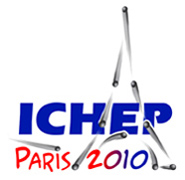Speaker
John Baines
(Particle Physics-Rutherford Appleton Laboratory-STFC - Science &)
Description
The ATLAS trigger has been used very successfully to collect collision data during 2009 and 2010 LHC running at centre of mass energies of 900 GeV, 2.36 TeV, and 7 TeV. The trigger system reduces the event rate, from the design bunch‐crossing rate of 40 MHz, to an average recording rate of 200Hz. The ATLAS trigger is composed of three levels. The first (Level 1) uses custom electronics to reject most background collisions, in less than 2.5μs, using information from the calorimeter and muon detectors. The upper two trigger levels, known collectively as the High Level Trigger (HLT), are software‐based triggers. As well as triggers using global event features, such as missing transverse energy, there are selections based on identifying candidate muons, electrons, photons, tau mesons or jets. We give an overview of the performance of these trigger selections based on extensive online running during LHC collisions and describe the progress towards fully commissioning these triggers. Distributions of key selection variables based on calorimeter and tracking information are shown calculated at the different trigger levels and are compared with offline reconstruction. We include examples of online triggering of Standard Model physics such as candidate W‐boson decays. Comparisons between data and simulations are shown for some important selection variables, already illustrating a very good level of understanding of the detector and trigger performance. We describe how the trigger has evolved with increasing LHC luminosity and give a brief overview of plans for forthcoming LHC running.
